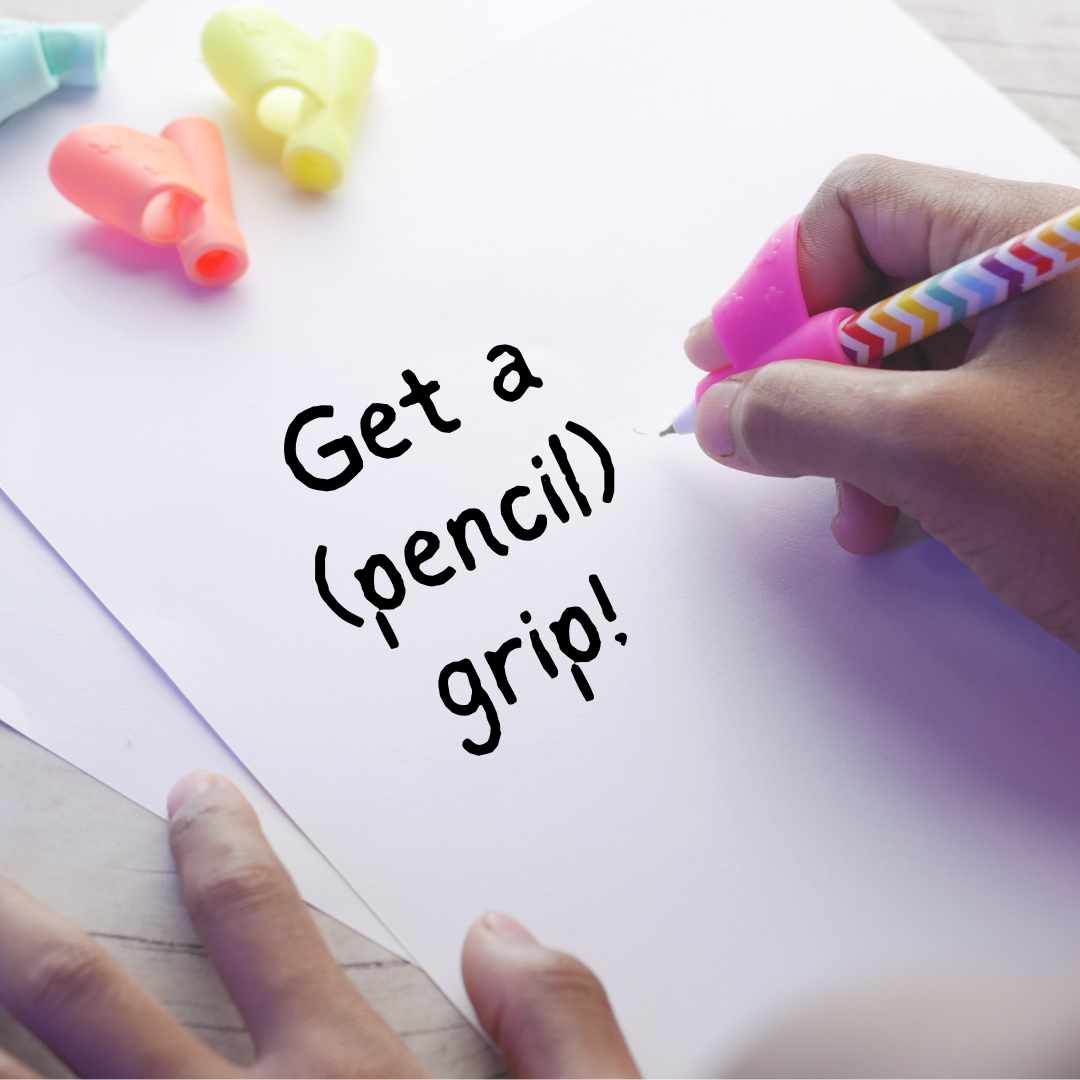Get a (Pencil) Grip!
Does your child hold a pencil in an awkward manner? Does your child struggle with fatigue or pain with drawing, writing, or coloring activities? If so, you may be wondering: “Should I get a pencil grip for my child to help with their grasp on a pencil?”
The short answer: maybe.
The longer answer: It is important to keep in mind that there are a variety of functional pencil grasp patterns that are appropriate for a child to use. Additionally, pencil grips by themselves will not typically address underlying areas that may be contributing to an inefficient grasp pattern or fatigue and pain with writing tasks.
Efficient pencil grasp pattern development includes:
- Postural control (being able to sit well and control movements of the trunk in multiple directions).
- Having strong and stable shoulder muscles. (The fancy OT term for this is proximal upper extremity stability).
- Strength in the hand itself (especially in the intrinsic, or smaller muscles of the hand).
- Developing the arches of the hand.
- To be able to separate the two sides of the hand so that one side can be stable while the other side moves.
- Wrist extension
- To be able to grade movement and force (e.g. the amount of pressure used to hold the pencil or the amount of pressure used when writing or drawing).
Therefore, it is important to focus on strengthening the muscles in the shoulder and hand, and to address any underlying reasons for fatigue or pain with writing, drawing, and coloring.
There are multiple activities that are beneficial for children to help them with their grasp on a pencil. One of the most fun ways to work on areas related to grasp on a pencil is to go outside!
Activities that help with postural control, stabilizing and strengthening the muscles in the shoulder, and/or that promote wrist extension:
- Wheelbarrow walks (ask your therapist for tips on the best way to help your child with this)
- Animal walks (crab walking, bear walking)
- Climbing up the slide at the park
- Crawling through a tunnel
- Playing games in prone (on their tummy)
Activities that can help develop or maintain the arches of the hand:
- Swinging on the monkey bars
- Cupping their hands and seeing how much dirt, sand, or water they can hold in their hands.
- Pouring water, dirt, or sand out of plastic cups and into other containers
Activities to help separate the two sides of the hand (important for increased control of the pencil):
- Holding small pom pom balls in between the palm and ring/pinky fingers while writing, drawing, or coloring.
- Using tongs to pick up items and place them in a container (Can vary the size of tongs and items).
- Use an eyedropper to paint an abstract picture. Focus on using the thumb and index/middle finger to squeeze the eye dropper.
Pencil grips (of which there are a dizzying number to choose from) can be a good additional tool to have in the toolbox when:
- Focusing on specific placement of the fingers for a more efficient grasp pattern
- A child’s muscle tone may be impacting their ability to hold the pencil
If you have questions about your child’s grasp on a pencil, a pediatric occupational therapist can help determine if the grasp is functional, appropriate, and efficient. An occupational therapist can also evaluate and address areas related to fatigue or pain with writing, coloring, or drawing activities. Finally, an occupational therapist can help determine if a trial of a pencil grip is appropriate, and if so, which type to use and for how long.
Kids Place Pediatric Therapy in Arizona is here to help. Click here to schedule your child’s occupational therapy evaluation.







